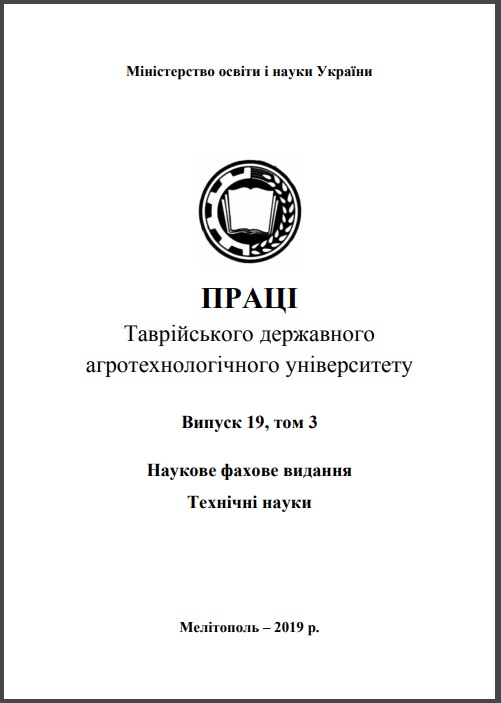АНАЛІЗ ЕФЕКТИВНОСТІ СТИСНЕННЯ ДАНИХ У ТРИВИМІРНІЙ СИСТЕМІ СКАНУВАННЯ З ВИКОРИСТАННЯМ RLE-АЛГОРИТМУ
Анотація
Анотація – методи, що використовуються для стиснення даних, дозволяють здійснювати більшу передачу інформації за рахунок обробки, що здійснюється за допомогою числових і статистичних перетворень. Можна представити одну і ту ж інформацію в меншому просторі. Одна з основних проблем, що існують у системах зв'язку, полягає у використанні каналу. Поточні дослідження спрямовані на вивчення характеристик і ефектів шуму, присутнього в каналі, і порушень, що генеруються в переданній інформації. В даній роботі досліджено ефективність алгоритму стиснення Run Length Encoding (RLE) у проводному каналі зв'язку. Шляхом вимірювання деяких параметрів можна визначити ефективність використання каналу, використовуючи алгоритм RLE. Дослідження, яке дозволяє визначити ефективність використання каналу дає використання алгоритму стиснення. Таким чином, можна визначити ефективність використання каналу завдяки алгоритму стиснення RLE.
На підставі проведених досліджень були зроблені наступні висновки:
Під час розробки даної роботи була впроваджена методика для оцінки працездатності алгоритму стиснення RLE, яка характеризується належністю до алгоритмів стиснення без втрат.
Інформація, яка враховувалась при розробці роботи, надходить із системи мехатронного сканування, метою якої є тривимірна реконструкція твердих елементів, з точністю механічного типу система доставляє цифрові зразки 10 біт, де кожен зразок представляє пікселя зображення розмірами 10000 пікселів на сторону, через це було потрібно розробка спеціалізованого словника для типу інформації.
Важливість роботи полягає в пропозиції методики, яка дозволяє вивчати алгоритми стиснення на більш глибокому рівні через те, що не тільки вивчається його розробка та реалізація, але ефективність визначається за критеріями, що дозволяють оцінити її ефективність у більш складну систему зв'язку, що дозволяє отримати конкретну інформацію про використання каналу, кількість біт, втрачених під час передачі інформації, і час, необхідний для стиснення інформації.
Посилання
D. A Gudeto Salomon, Data Compression Methods, New York: Springer Verlag, 2002.
S. HAYKIN, Digital Communication, John Wiley Sons, 1988.
S. Haykin, Communication Systems, McMaster University: John Wiley Sons, 2001.
B. Sklar, Digital Communications, Fundamentals and Communications, Prentice Hall, 2001.
J. Proakis and M. Salehir, Communication Systems Engineering, Upper Saddle River, New Jersey 07458: Prentice Hall, 2002.
A. S. William and . A. Pearlman, Digital Signal Compression, Cambridge University Press, 2011.
D. Salomon, A guide to Data Compression Methods, Springer, 2002.
B. M. a. J. Abrahams, "On the redundancy of optimal binary prefix-condition codes for finite and infinite sources," IEEE Transactions on Information Theory, vol. 33, no. 1, pp. 156-160, Jan. 1987.
B. M. J. E., Transmisión de Datos, ULA: Taller de Publicaciones de la Facultad de Ingeniería, 2005.
J. Fowler and . R. Yagel, Lossless Compression of Volume Data, Symposium on Volume Visualization, 2007.
K. S. N. M. J. D. a. P. J. M. T. Asif, "Near-Lossless Compression for Large Traffic Networks," IEEE Transactions on Intelligent Transportation Systems, vol. vol. 16, no. no. 4, pp. pp. 1817-1826, Aug. 2015.
P. D. Symes, Video Compression, McGraw-Hill, 1998.
S. B., C. A. Bibyk Kenneth and M. J. Shalkhausert, Digital Compression Algorithmsf For Hdtv Transmission, The Ohio State University Columbus: Dept. of Electrical Engineering.
Y. W. W. X. a. Q. D. J. Yang, "Image Coding Using Dual-Tree Discrete Wavelet Transform," IEEE Transactions on Image Processing, vol. 17, no. 9, pp. 1555-1569, Sept. 2008..
E. h. Y. a. L. Wang, "Joint Optimization of Run-Length Coding, Huffman Coding, and Quantization Table With Complete Baseline JPEG Decoder Compatibility," IEEE Transactions on Image Processing, vol. 18, no. 1, pp. 63-74, 2009.
J. M. H. Madrid, Caracterización de Algortimos de Compresión de Datos en la Comunicación de un Sistema de Detección de Defectos, Puebla, México, 2014.
B. J. a. W. P. Burleson, "Real-time VLSI compression for high-speed wireless local area networks," Data Compression Conference, pp. pp. 431-., 1995.
D. W. Jones, "Practical evaluation of a data compression algorithm," in Data Compression Conference,, Snowbird, UT, 1991.



